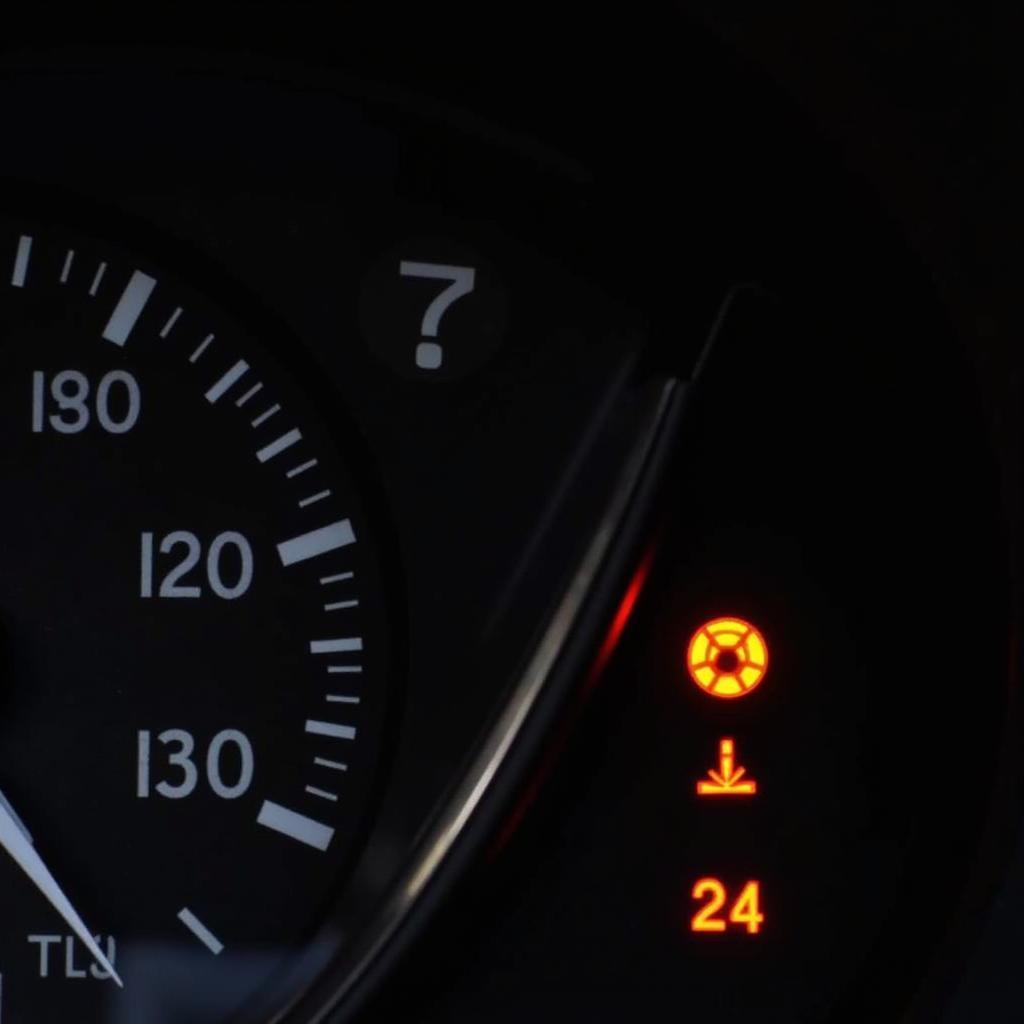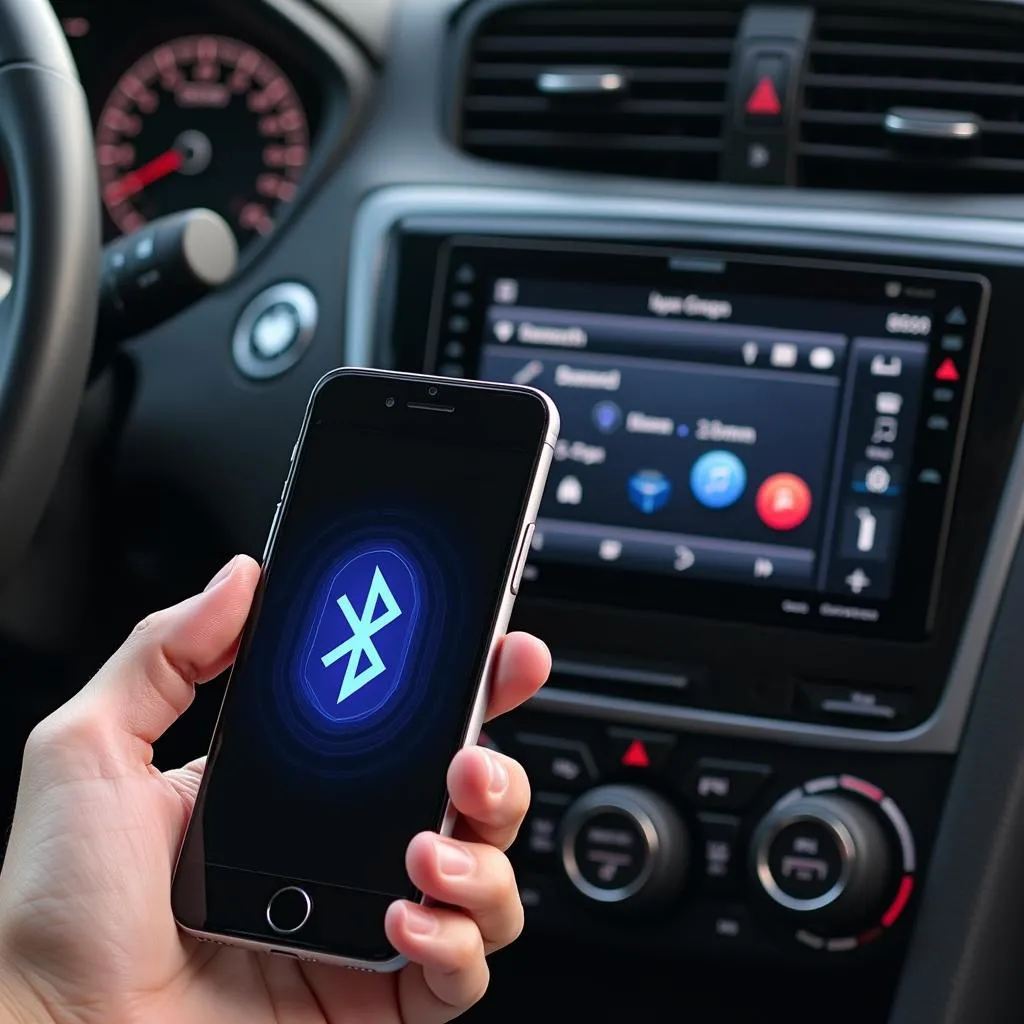The red brake light on your dashboard, often accompanied by an exclamation mark or the word “BRAKE,” is a critical warning signal you should never ignore. This light indicates an issue with your vehicle’s braking system, potentially putting you and other drivers at risk. This comprehensive guide will delve into the common causes of a red brake light warning, how to diagnose the problem, and potential solutions.
Understanding Your Car’s Braking System
Before we jump into the causes of a red brake light warning, it’s helpful to understand the basics of how your car’s braking system works. Your car uses a hydraulic system to transmit force from the brake pedal to the wheels, effectively slowing down or stopping the vehicle. When you press the brake pedal, it activates a piston in the master cylinder, pressurizing the brake fluid. This pressure travels through brake lines to calipers or wheel cylinders at each wheel, causing the brake pads or shoes to clamp down on the rotors or drums, creating the friction needed to stop the vehicle.
Common Causes of a Red Brake Light Warning Light
A red brake light warning light can illuminate for several reasons, ranging from minor issues to serious malfunctions:
- Low Brake Fluid Level: One of the most common culprits is low brake fluid. This could be due to a leak in the system or worn-out brake pads.
- Worn Brake Pads: Brake pads are designed to wear down over time. If they wear too thin, the brake warning light will illuminate.
- Faulty Brake Light Switch: The brake light switch, located near the brake pedal, signals the brake lights to activate when you press the brake pedal. If it malfunctions, it can also trigger the brake warning light.
- ABS Issue: Modern cars are equipped with Anti-lock Braking Systems (ABS). If there’s a problem with the ABS module, sensor, or wiring, the brake warning light may turn on.
- Master Cylinder Failure: The master cylinder is the heart of your braking system. If it fails, you’ll experience a significant loss of braking power.
- Parking Brake Engaged: In some vehicles, leaving the parking brake partially engaged can trigger the warning light.
Diagnosing the Problem
Identifying the root cause of the warning light is crucial for determining the necessary repairs:
- Check Your Brake Fluid: The first step is to safely park your car and check the brake fluid level in the master cylinder reservoir. If the fluid level is low, it indicates a leak or worn brake pads.
- Inspect Your Brake Pads: If possible, visually inspect your brake pads for wear and tear. If they appear thin or you notice a grinding noise when braking, they likely need replacement.
- Listen for Unusual Noises: Pay attention to any unusual noises while driving or braking. Grinding, squeaking, or clicking sounds can indicate brake system problems.
- Check Your Parking Brake: Ensure your parking brake is fully disengaged.
When to Seek Professional Help
While some brake light issues can be addressed with basic troubleshooting, it’s generally advisable to consult with a qualified mechanic, especially if:
- You’re not comfortable working on your car’s braking system.
- You suspect a serious issue, such as a master cylinder failure.
- The problem persists after basic troubleshooting.
Remote Diagnostics and Software Solutions
In today’s technologically advanced automotive landscape, remote diagnostics and software solutions play a crucial role in addressing brake system issues.
Here’s how it works:
- Remote Scanning: Many modern vehicles can be remotely scanned for diagnostic trouble codes (DTCs) that provide valuable insights into the problem.
- Software Updates: Manufacturers regularly release software updates for various vehicle systems, including brakes. These updates can often address bugs or improve system performance.
- Remote Calibration: In some cases, brake system components might require calibration, which can be performed remotely by skilled technicians using specialized software.
Preventing Future Issues
- Regular Maintenance: Adhere to your vehicle manufacturer’s recommended maintenance schedule for brake fluid flushes and brake inspections.
- Drive Smoothly: Avoid harsh braking whenever possible, as it can accelerate brake pad wear.
- Address Warning Lights Promptly: Never ignore dashboard warning lights, especially those related to your brakes.
Conclusion
The red brake light warning light is a serious signal that should never be ignored. Understanding its potential causes, performing basic troubleshooting, and seeking professional help when necessary can help ensure your safety and the optimal performance of your vehicle’s braking system. Remember, regular maintenance and timely repairs are key to preventing costly and potentially dangerous brake system failures.
Expert Insight:
“Many drivers underestimate the importance of regular brake fluid flushes,” says John Smith, Senior Automotive Technician at ABC Auto Repair. “Brake fluid can absorb moisture over time, reducing its effectiveness and potentially leading to corrosion within the braking system.”
FAQs
1. Can I still drive my car with the red brake light on?
It’s strongly advised against driving your car with the red brake light illuminated. This warning light indicates a potential problem with your braking system, putting you and others at risk.
2. How much does it cost to fix a red brake light warning?
The cost of repair can vary greatly depending on the underlying cause. A simple brake fluid top-up might cost a few dollars, while a complete brake system overhaul could cost several hundred or even thousands of dollars.
3. How often should I check my brake fluid?
It’s a good practice to check your brake fluid level at least once a month and more frequently if you notice any changes in brake pedal feel or unusual noises while braking.
4. Can I add any type of brake fluid to my car?
No, using the incorrect type of brake fluid can damage your braking system. Refer to your vehicle owner’s manual for the recommended brake fluid type and specifications.
5. Is it safe to replace my brake pads myself?
While it’s possible to replace brake pads yourself, it’s generally recommended to have this service performed by a qualified mechanic, especially if you’re not comfortable working with car brakes.


